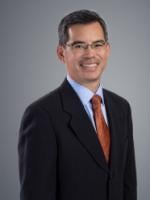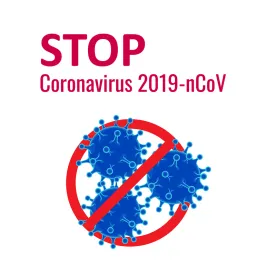Both San Francisco and San Jose have enacted emergency ordinances aimed at providing paid leave to workers who are not covered by the federal Families First Coronavirus Response Act. Unlike the new federal law (which applies only to employers with fewer than 500 employees), the San Francisco and San Jose ordinances require additional employers to provide supplemental paid leave to qualifying employees in the midst of the COVID-19 pandemic.
San Francisco's Public Health Emergency Leave Ordinance (PHELO) went into effect April 17, 2020. The San Jose COVID-19 Paid Sick Leave Ordinance went into effect April 7, 2020.
SAN FRANCISCO
San Francisco is temporarily requiring private employers with 500 or more employees to provide paid public health emergency (PHE) leave to certain employees impacted by COVID-19. The emergency ordinance allows qualifying employees up to 80 hours of paid PHE leave if unable to work (or telework) due to specific conditions impacted by COVID-19. The PHE leave is in addition to any paid time off that the employer offered or provided to employees on or before the effective date of the PHELO. However, if during the PHE (i.e., on or after February 25, 2020, the date the mayor declared the PHE), an employer provided additional paid leave or paid time off for PHE reasons related to COVID-19 (not including previously accrued hours), those hours may be counted toward the employer's PHELO obligation. The PHELO further prohibits employers from changing any paid time off policies on or after the effective date of the PHELO except to provide additional paid leave.
At this point, the new law automatically expires on the 61st day after enactment (unless reenacted or the PHE ends prior to the 61st day). Although similar to the federal Families First Coronavirus Response Act, the San Francisco Ordinance provides more generous benefits, including allowing employees to take leave in one-hour increments and more broadly defines covered "employees."
The Ordinance provides qualifying full-time employees (who were full-time employees as of February 25, 2020) with up to 80 hours of paid leave. Qualifying part-time employees (who were part-time employees as of February 25, 2020) will be entitled to paid leave for the average number of hours over a two-week period that the employee was scheduled to work over the prior six months, ending February 25, 2020, (this includes any hours taken for any other type of leave). Leave for nonexempt employees should be calculated at the employee’s regular rate of pay for the workweek in which the employee uses the leave (or by dividing the employee’s total wages – not including overtime premium pay – by the employee’s total hours worked in the pay periods of the prior 90 days of employment). Leave for exempt employees should be calculated in the same way the employer calculates other forms of paid leave.
To be eligible for paid leave under the Ordinance, the employee must provide labor or services within the City or County of San Francisco. This includes full-time, part-time, and temporary workers (including those participating in a Welfare-to-Work Program), regardless of how long the employee has worked for the employer. Employees may also be eligible for leave under the Ordinance if they perform limited work within the City or County of San Francisco (including, but not limited to, working from home), subject to the Office of Labor Standards Enforcement’s rules implementing San Francisco’s Paid Sick Leave Ordinance.
To be eligible for paid leave under PHELO, the employee must be unable to work (either at their customary workplace or via telework) due to one of the following circumstances:
-
The employee is subject to quarantine/isolation by law due to COVID-19;
-
A healthcare provider has advised the employee to self-quarantine;
-
The employee has COVID-19 symptoms and is seeking medical diagnosis;
-
The employee is taking care of a family member who (a) is subject to quarantine/isolation by law due to COVID-19, (b) has been advised by a healthcare provider to self-quarantine, or (c) has COVID-19 symptoms and is seeking diagnosis;
-
The employee is taking care of a family member whose school or place of care has been closed or is otherwise unavailable due to COVID-19; or
-
The employee experiences “any other substantially similar condition specified by the Local Health Officer, or . . . by the United States Secretary of Health and Human Services.”
The Ordinance contains a carve-out for healthcare workers and first responders, permitting employers of those workers to limit the availability of PHELO in limited circumstances.
Although an employer cannot require an employee to disclose health information (including that the Ordinance prohibits employers from requiring a doctor’s note), an employer may require the employee to identify the basis for which the employee is requesting leave under the Ordinance. An employer is also prohibited from requiring employees to search for or find replacements as a condition of obtaining leave under the Ordinance.
The Ordinance specifically advises that the new leave requirements do not apply to employees covered by a collective bargaining agreement (to the extent the requirements have been waived by the agreement).
The Office of Labor Standards Enforcement has published a poster for employers to distribute to their employees regarding the new requirements. Employers must provide the notice to employees by posting it in the workplace, sending it via electronic communication to employees, or posting it on the employer’s web-based or app-based platform. The notice should also include (to the extent feasible) the amount of leave under the Ordinance available to the employee. The notice must be provided in English, Spanish, and any language spoken by at least five percent of employees.
SAN JOSE
The San Jose COVID-19 Paid Sick Leave Ordinance provides paid leave to certain employees who work at least two hours within the City and are not otherwise provided paid leave under the federal Families First Coronavirus Response Act. Employers subject to the Ordinance are employers that are either subject to the San Jose Business License Tax or have a facility within the City of San Jose. The Ordinance took effect April 7, 2020, and expires December 31, 2020.
The Ordinance requires employers to provide paid leave to certain employees who may leave their residences to perform “essential work” (as defined by the Santa Clara County Public Health Officer). The Ordinance is not intended to provide paid leave under the Ordinance to employees who have the ability to work from home.
Under the Ordinance, full-time employees are entitled to 80 hours of paid sick leave, while part-time employees are entitled to paid sick leave for hours equal to the number of hours worked on average over a two-week period. An employee may receive paid sick leave in the amount of their regular rate of pay, up to $511 per day (not to exceed $5,110). Part-time employees may receive paid sick leave based on the average number of hours worked per day during the preceding six-month period (or if the employee has worked less than six-months, based on the average hours the employee was expected to work to at the time they were hired).
If an employee uses paid sick leave under the Ordinance to care for someone else, the employer may pay the employee sick leave in the amount of two-thirds of the employee’s regular rate (up to $200 per day, not to exceed $2,000).
The Ordinance requires employers to provide paid sick leave to an employee if:
-
The employee is under quarantine/isolation by law due to COVID-19 (or is caring for someone quarantined/isolated due to COVID-19);
-
A healthcare provider advises the employee to self-quarantine because of COVID-19 (or is taking care of someone who has been given that advice by a healthcare provider);
-
The employee has COVID-19 symptoms and is seeking medical diagnosis; or
-
The employee is taking care of a minor child due to COVID-19-related school/daycare closures.
The Ordinance specifically notes that employers cannot, as a condition of taking paid sick leave, require an employee to find a work replacement. The Ordinance does not apply to employers that already provide employees with paid personal leave at least equivalent to the paid leave required by the Ordinance. The Ordinance also does not apply to employers operating hospitals under certain circumstances.
These new ordinances providing supplemental paid leave due to COVID-19 are similar to those enacted in other California cities, including the City of Los Angeles. Other Bay Area cities, such as Oakland, are considering proposing paid leave policies. The City of Emeryville has provided guidance on paid sick leave requirements related to COVID-19 concerns. Employers should remain vigilant regarding local emergency ordinances and dynamic public health orders and guidance being put into effect in all cities where they are located and/or have employees.
Employers of all sizes must adjust to the extraordinary circumstances of the Coronavirus outbreak, and implement appropriate personnel policies and workplace practices to ensure compliance with these new – and rapidly evolving- legal requirements. Training for supervisors and management is paramount.



 />i
/>i
